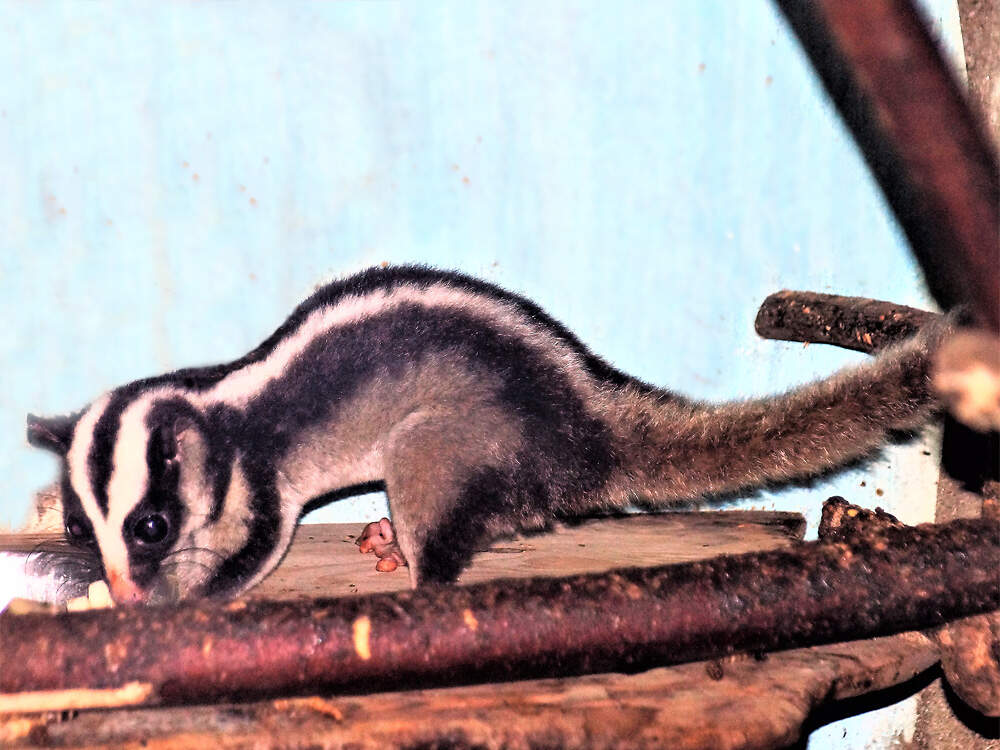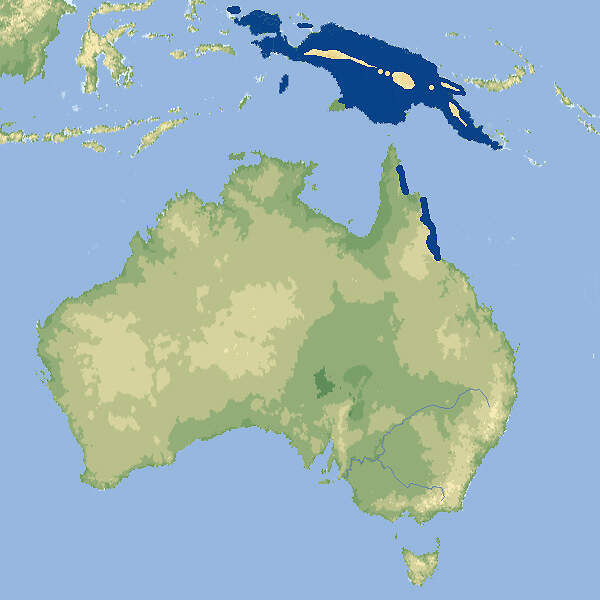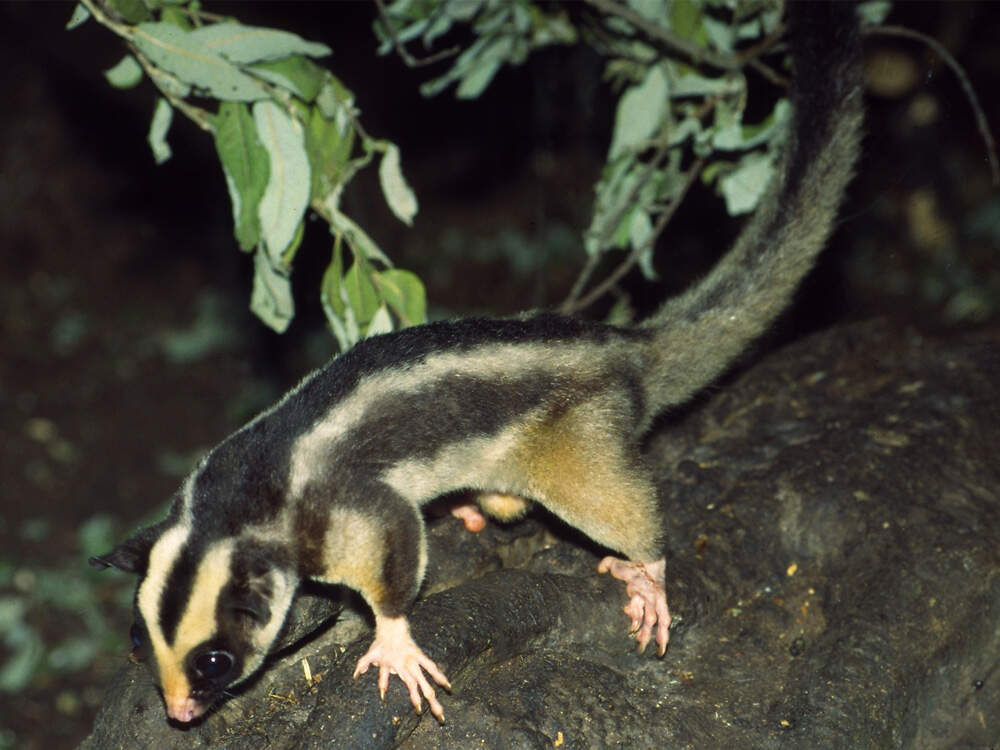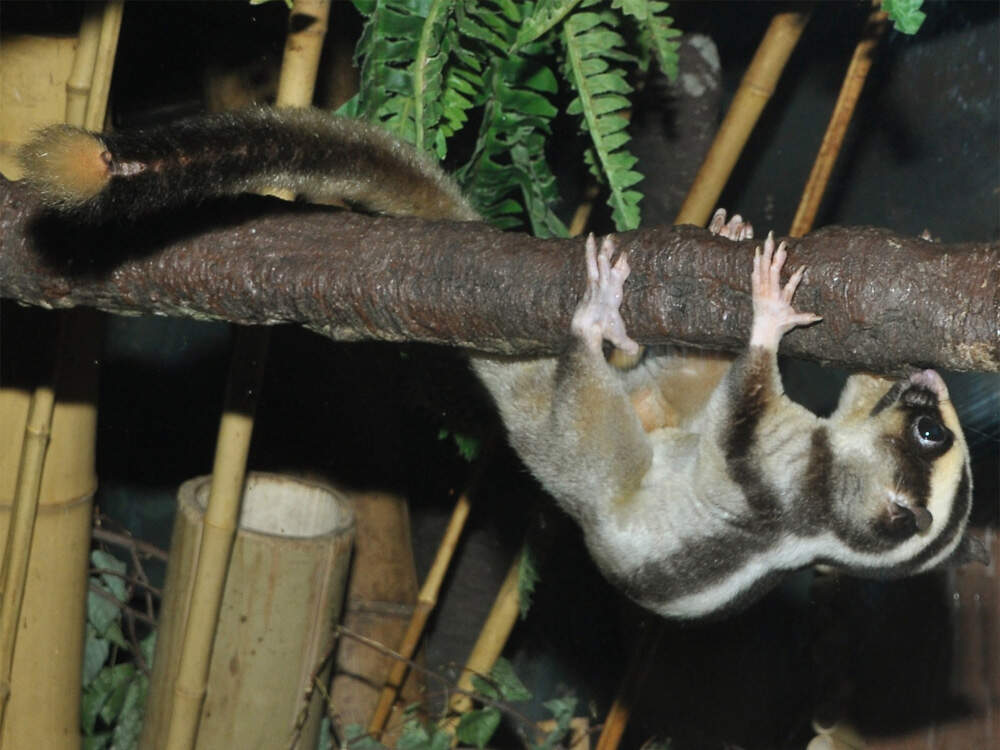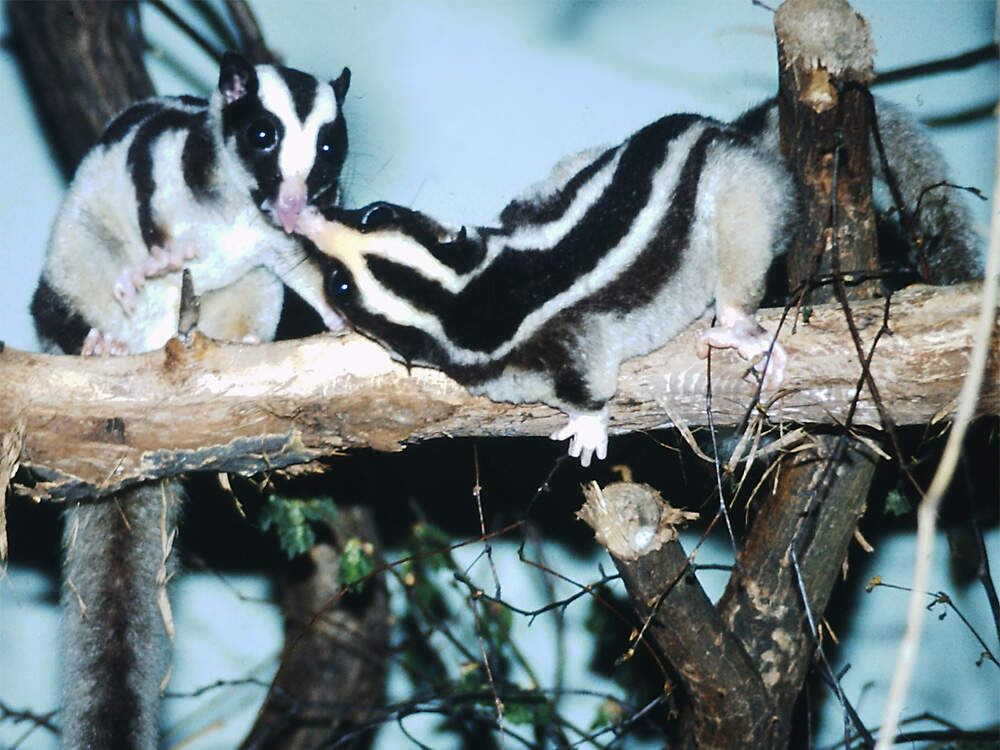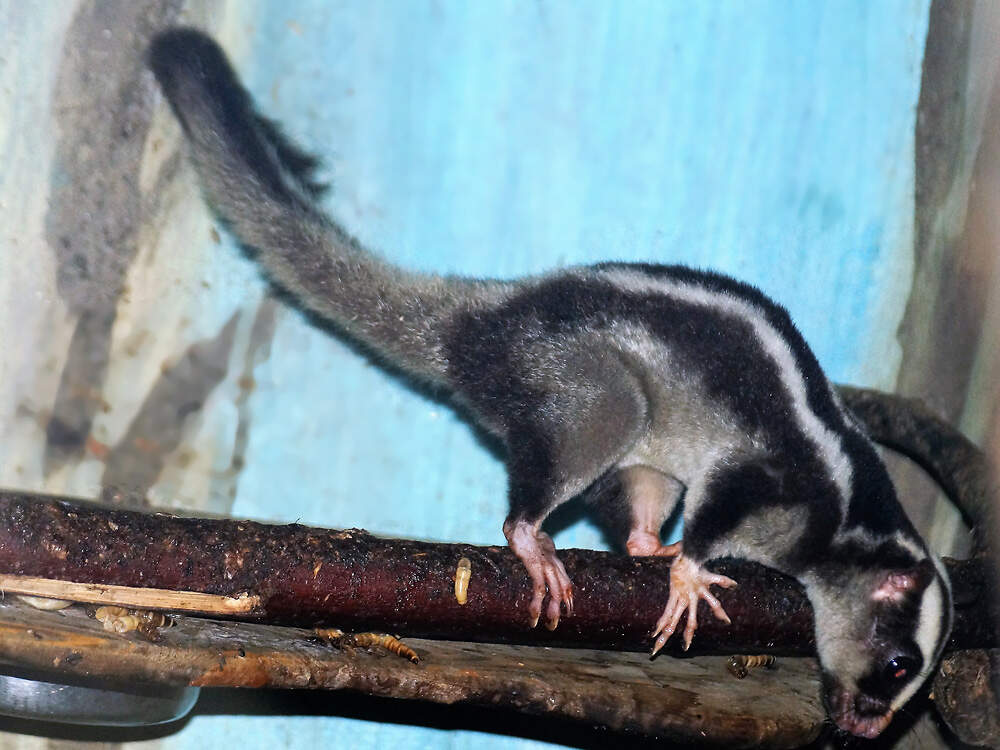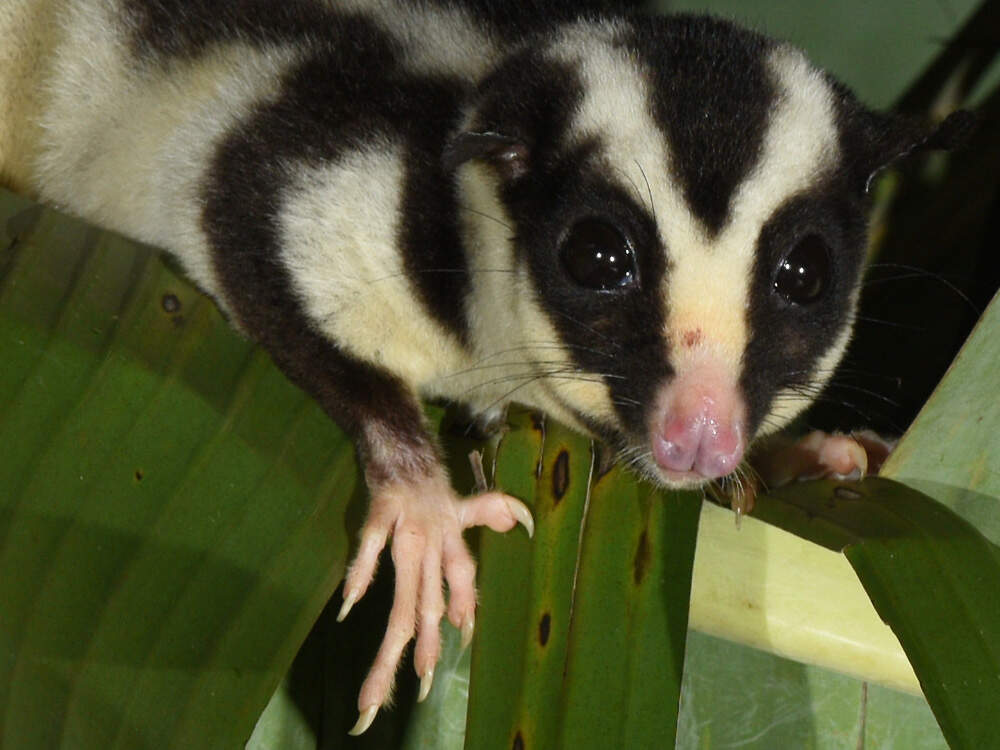WALLER, T., MICUCCI, P. & RICHARD, E. (1989)
Preliminary Results of the Research on Biology, Ecology and Conservation of the Chelonoidis chilensis (Sensu Lato) Gray, 1870 Tortoise in Argentina.
Buenos Aires: Proyecto Tortugas, Fundación Vida Silvestre Argentina.
PDF, 45 Seiten, 8 Anhänge mit Grafiken.
waller-biblio
BUTINSKY, T. M. (2000)
Independent Evaluation of Hirola Antelope Beatragus hunteri Conservation Status and Conservation Action in Kenya.
Technical Report, September 2000. 189 Seiten. DOI: 10.13140/RG.2.1.1129.2246
Executive Summary:
The hirola (or Hunter’s antelope) Beatragus hunteri is a "Critically Endangered" genus and species endemic to south-east Kenya and south-west Somalia. This report compiles much of the information that is available on this species, and reviews and evaluates its taxonomy, abundance, distribution, and conservation status. This report also evaluates the major activities implemented on behalf of the conservation of the hirola and makes recommendations for the conservation of this species/genus both in situ and ex situ.
The hirola is one of the world’s most threatened genera of large mammal. This species is now either in low numbers or extinct in Somalia. The natural population in Kenya declined from about 14,000 individuals in the l970s to somewhere between 500 and 2,000 animals today.The historic range of the hirola in Kenya and Somalia is estimated at roughly 38,400 km2. The range of the hirola in Kenya declined from about 17,900 km2 in the 1960s to approximately 7,600 km2 in 1996. Today, only the central portion of the species’ historic range in Kenya is occupied.
In 1963, a founder population of 10-20 hirola was released into Tsavo East National Park. This population grew to 79 individuals by 1996. In 1996, another 29 hirola were placed into this population. There were an estimated 105 hirola in the Tsavo population in 1998. This population now ranges over an area of ca. 600 km2.
The decline of the hirola on the species’ natural range is probably due to a combination of factors, including disease, drought, poaching, competition with livestock, habitat loss and degradation. This report discusses the possible contribution of each of these factors to the decline of the hirola. The most likely scenario is that a combination of rinderpest and food shortage (due to drought, competition with livestock and habitat loss/degradation) caused the natural population of hirola to crash between 1983 and 1985, from at least 10,000 animals to fewer than 2,000 animals. Continuing disease and poaching on the natural range have probably combined to prevent this population from recovering.
The following are among the more important recommendations put forth in this report for the conservation of the hirola:
- Transfer the focus of the field research programme from the ex situ population in Tsavo East National Park to the in situ “natural population” in Garissa District and increase the number of Kenya and Somali researchers.
- Abandon attempts to determine the absolute size of the natural population of hirola and begin a monitoring program that provides information on relative population size and population trend.
- Future translocations from the natural population to new sites should only capture yearlings. This should be done by darting from a helicopter. There appears to be no good rational for capturing adults or for capturing entire groups.
- Retain at least part of the populations of newly translocated hirola in large (4-10 km2) bomas. This should significantly enhance population establishment and growth.
- Every effort needs to be made to save the hirola in situ while establishing several ex situ populations and a captive population as “insurance” against the possible failure to save the in situ population. To help ensure the long-term survival of the hirola, five additional populations should be established in Kenya and a viable captive population must be established outside of Kenya. The priority site for the introduction of the next population of hirola on a KWS managed area is Meru National Park, followed by Tsavo West National Park. The priority site for the establishment of a hirola population on a private game sanctuary is the Ol Jogi
(Pyramid) Wildlife Sanctuary, followed by the Athi River Game Ranch. Most of the founder animals for these new populations should come from the natural population in Garissa District, after careful and full negotiation with local stakeholders. As an initial undertaking, however, consideration should be given to translocating the threatened Mackinnon Group of 15 hirola from the heavily poached Kulalu Ranch (east of Tsavo East National Park) to the Ol Jogi (Pyramid) Wildlife Sanctuary. - KWS, with assistance from the Hirola Management Committee, should reestablish its presence within the natural range of the hirola. The priority should be to reestablish the KWS base at Ijara, followed by reestablishment of the KWS base at Massa Bubu.
- KWS, with assistance from the Hirola Management Committee, needs to renew and greatly expand its conservation education, public awareness and public relations work within the natural range of the hirola, particularly in Garissa District. This might be achieved largely by working with and through the Harroru Community Hirola Conservation Group, the Garissa Development Committee and the Garissa District Administration.
butinsky-biblio
Grosser Streifenbeutler
 |
Neue Tierart
|
Unterklasse: Beuteltiere (MARSUPIALIA)
Ordnung: Känguruverwandtschaft (DIPROTODONTIA)
Unterordnung: Kuskusse und Gleitbeutler (Phalangeriformes)
Familie: Gleitbeutler (Petauridae)

Großer Streifenbeutler
Datylopsila trivirgata • The Striped Possum • Le phalanger au pelage rayé
- Körperbau und Körperfunktionen
- Verbreitung
- Lebensraum und Lebensweise
- Gefährdung und Schutz
- Bedeutung für den Menschen
- Haltung
- Taxonomie und Nomenklatur
- Literatur und Internetquellen
|
Weitere Bilder auf BioLib |
Der Große Streifenbeutler gehört zu den mittelgroßen Arten der Gleitbeutler-Familie. Es handelt sich um eine nicht-gefährdete, nachtaktive Art, die in europäischen Zoos stets selten war und seit einigen Jahren nicht mehr gehalten wird, obwohl sie wegen ihrer Konvergenz zum Aye-Aye von zoopädagogischem Interesse ist Körperbau und KörperfunktionenGroße Streifenbeutler haben eine Kopf-Rumpfläng von 24-28 cm, der Schwanz ist mit 32.39 cm deutlich länger. Männchen wiegen 428-545 g und Weibchen 310-475 g. Das Fell weist eine schwarz-weiße oder schwarz-graue Längsstreifung auf. Der Schwanz ist grau-schwarz und längst nicht so buschig wie bei dem in etwa gleichgroßen Buschschwanz-Streifenbeutler (D. megalura). Die Weibchen haben in ihrem Beutel zwei Zitzen. Die Tiere haben einen äußerst unangenehmen Eigengeruch. Verschiedene Merkmale stellen eine konvergente Entwicklung zum Fingertier dar: Die Schneidezähne sind vergrößert, die oberen nach vorn gerichtet und die unteren stark verlängert, die Finger sind praktisch unbehaart, und der vierte Finger ist verlängert. Dies ermöglicht den Tieren, Löcher in die Baumrinde zu bohren und die darunter befindlichen Insektenlarven herauszuangeln [1; 6]. VerbreitungAustralasien: Indonesien (West-Papua, Aru-, Waigeo- und Yapen-Inseln), Papua-Neuguinea und Australien (Queensland) [3]. Lebensraum und LebensweiseGroße Streifenbeutler sind Baumbewohner, die primäre und sekundäre Feuchtwälder sowie angrenzende Eukalyptus- und Teebaum-Savannen (Melaleuca alternifolia) vom Meersspeigel bis auf eine Höhe von 2'300 m besiedeln. Sie sind nachtaktiv und schlafen tagsüber in Nestern aus Blättern, die in Baumhöhlen oder in Gewirren von Lianen angelegt werden. Sie leben außerhalb der Paarungszeit solitär bzw. in Mutterfamilien. Die Tiere können weite Sprünge von Baum zu Baum durchführen [1; 4; 6]. Große Streifenbeutler ernähren sich in erster Linie von Insekten, wie Ameisen, Termiten, Käfern, Grillen oder Schmetterlingen, daneben nehmen sie in geringem Umfang Baumsäfte, Pollen, Blütennektar und Früchte zu sich. Es gibt keine eigentliche Fortpflanzungsperiode, jedoch kommt es von März-Juni gehäuft zu Geburten. In Neuguinea wurden Paarungen von Januar-Oktober beobachtet. Die Weibchen bringen in der Regel einen Wurf mit (1-)2 Jungen pro Jahr zur Welt [1; 2]. Gefährdung und SchutzDer Große Streifenbeutler gilt trotz negativem Bestandstrend aufgrund einer Beurteilung aus dem Jahr 1996, letztmals überprüft 2016, nicht als gefährdet (Rote Liste: LEAST CONCERN), weil er weitverbreitet ist, mutmaßlich eine große Gesamtpopulation hat, in etlichen Schutzgebieten vorkommt, unterschiedliche Lebensräume nutzen kann und auch in veränderten, degradierten Lebensräumen leben kann [4]. Der internationale Handel ist nicht unter CITES geregelt. Für lebende Tiere gelten Ausfuhrbeschränkungen Australiens. Die nach Europa eingeführten Tiere stammten, soweit bekannt, aus Neuguinea (West-Papua). Bedeutung für den MenschenGroße Streifenbeutler werden von der indigenen Bevölkerung Neuguineas zur Fleisch- und Pelzgewinnung gejagt. Die Pelze werden für kulturelle Rituale verwendet [1; 4]. HaltungNach JACKSON soll für ein Paar Tiere eine Gehegefläche von 9 m² bei einer Höhe von 3 m nicht unterschritten werden, für jedes weitere Tier soll 4 m² Bodenfläche zusätzlich angeboten werden [2]. Der älteste bekannte Große Streifenbeutler in einem Zoo wurde im Londoner Zoo geboren und starb ebendort im Alter von 9 Jahren und 7 Monaten [5]. Haltung in europäischen Zoos: Die Art war in Zoos stets selten, Nachzuchten waren die Ausnahme, und 2020 starben die beiden letzten Tiere im Zoo von Jihlava / Iglau. Für Details siehe Zootierliste. Mindestanforderungen an Gehege: Nach Säugetiergutachten 2014 des BMEL soll das Gehege für 1 -2 Tiere eine Mindestfläche von 6 m² bei einer Höhe von 2 m messen. Für jedes weitere Tier soll die Grundfläche angemessen (um ca. 0.6 m²) erhöht werden. Die Tierschutzverordnung der Schweiz schreibt für 6 Tiere ein Innengehege von 6 m² bei 2 m Höhe vor. Für jedes weitere Tier wird 1 m² Fläche zusätzlich verlangt. Die 2. Tierhaltungsverordnung Österreichs verlangt für ein Paar ein Innengehege von 2 m² bei 3.5 m Höhe. Für weitere Tiere werden keine Vorgaben gemacht. Taxonomie und NomenklaturDie Art wurde 1858 von John Edward GRAY vom British Museum in London unter ihrem heute noch gültigen Namen erstmals wissenschaftlich beschrieben. Sie ist die Typusart der Gattung Dactylopsila, die heute fünf Arten umfasst. Gegenwärtig werden 4 Unterarten anerkannt [6]. Der Gattungsname bezieht sich auf die beinahe unbehaarten Finger der Tiere (δάκτυλος = Finger, ψιλός = kahl). |
Literatur und Internetquellen
- ANIMAL DIVERSITY WEB
- JACKSON, S. M. (2003)
- PUSCHMANN, W., ZSCHEILE, D., & ZSCHEILE, K. (2009)
- SALAS, L. et al. (2016). Dactylopsila trivirgata. The IUCN Red List of Threatened Species 2016: e.T6226A21960093. https://dx.doi.org/10.2305/IUCN.UK.2016-2.RLTS.T6226A21960093.en. Accessed on 18 April 2023..
- WEIGL, R. (2005)
- WILSON, D. E. et al. eds. (2009-2019)
Zurück zu Übersicht Kloaken- und Beuteltiere
VAN BALEN, S. & COLLAR, N. (2021)
The Vanishing Act: A History and Natural History of the Javan Pied Starling Gracupica jalla.
Ardea, 109(1):41-54 (2021). https://doi.org/10.5253/arde.v109i1.a1
Abstract:
The Javan Pied Starling Gracupica jalla, a recent taxonomic split from Asian Pied Starling G. contra, has disappeared almost entirely unnoticed from its native range in Java and Bali, Indonesia; in a circumstance unique in bird conservation, the only known populations are held in bird shops. To provide an evidence base for any future endeavour to re-establish a population in the wild, we reviewed all published information on the species relevant to its conservation, supplemented by specimen label data, unpublished field notes, diaries and manuscripts. A population in eastern Sumatra (nine localities reported, including Bangka) had obscure origins. The species was widespread in Java (168 localities) and Bali (13 localities), and was described as one of the commonest birds in open, i.e. non-forest, lowland country (records up to 1600 m), having a high tolerance of disturbed habitats, especially agricultural areas, with often large roosts inside city limits. It fed mainly on terrestrial invertebrates and fruits, often consuming plant pests and frequently probing dung. It bred all year but chiefly in response to rains, with apparent peaks in January and May in West Java and April in East Java, building conspicuous untidy nests high in trees and laying mostly 3 (2–4) eggs. The cagebird trade is blamed for the massive decline that abruptly became apparent in the late 1990s and early 2000s, but the use of pesticides in Java and Bali's agricultural environment seems likely to have played an unseen role. Searches are needed to find any remnant populations, along with the creation of a programme of captive breeding and research to identify potential areas for reintroduction.
van balen-biblio
ZAUGG, B. (2022)
Rote Liste der Fische und Rundmäuler. Gefährdete Arten der Schweiz. Stand 2022.
Hrsg.: Bundesamt für Umwelt (BAFU); info fauna (CSCF). Aktualisierte Ausgabe 2022. Umwelt-Vollzug Nr. 2217: 37 Seiten.
Volltext:
Zusammenfassung:
Der Gefährdungsstatus der Fisch- und Rundmäulerarten wurde anhand der international anerkannten Kriterien der Weltnaturschutzunion (International Union for Conservation of Nature, IUCN) ermittelt. So wurden die verschiedenen Arten einer von vier Gefährdungskategorien – in der Schweiz ausgestorben (RE, regionally extinct), vom Aussterben bedroht (CR, critically endangered), stark gefährdet (EN, endangered) oder verletzlich (VU, vulnerable) – zugeordnet oder als potenziell gefährdet (NT, near threatened) oder als nicht gefährdet (LC, least concern) beurteilt. Diese Methodik stützt sich auf die Analyse der jüngsten Entwicklung der räumlichen Verteilung der Arten sowie ihres Verbreitungsgebiets. Nur einheimische Taxa wurden evaluiert, «Neozoen» (ortsfremde, durch den Menschen eingeschleppte Arten) wurden nicht berücksichtigt. Die Ergebnisse dieser ersten Gefährdungsbeurteilung gemäss IUCN-Kriterien wurden anschliessend einer Expertenkommission zur Beratung vorgelegt, die auf der Grundlage ihrer Fachkenntnisse den Gefährdungsstatus bestätigte oder anpasste und danach die Rote Liste validierte.
Für die Bewertung wurde in der vorliegenden Roten Liste hauptsächlich die taxonomische Stufe der Art verwendet. Nebst den einzelnen Arten werden aber auch ganze Taxa als gefährdet eingestuft. Die Felchen werden als Gattung Coregonus zusammengefasst, da der taxonomische Status der einzelnen Arten erst kürzlich aufgearbeitet wurde und noch nicht abgeschlossen ist. Bei der atlantischen Forelle (Salmo trutta) wird zwischen vier Lebensformen (Bach-, Fluss-, See- und Meerlebensform) unterschieden, die jeweils einen anderen Gefährdungsgrad aufweisen.
Die Schweizer Gewässer werden aktuell oder wurden von insgesamt 90 Taxa (4 Rundmäuler und 86 Fische) besiedelt, wovon 19 nicht zur einheimischen Fischfauna zählen. Analysiert wurde der Gefährdungsgrad der 71 einheimischen Taxa: 9 sind in den letzten 100 Jahren in der Schweiz ausgestorben (RE), 15 sind vom Aussterben bedroht (CR), 8 sind stark gefährdet (EN), 11 sind verletzlich (VU) und 9 – darunter die Gattung Coregonus – sind potenziell gefährdet (NT). Von den verbleibenden 19 einheimischen Arten gelten 14 als nicht gefährdet (LC) und bei 5 Arten reichen die vorhandenen Daten und Kenntnisse nicht aus, um ihnen einen Gefährdungsstatus zuzuordnen (DD, data deficient).
Lässt man die 5 Arten mit ungenügender Datengrundlage ausser Acht, so zeigt sich, dass von den 66 untersuchten einheimischen Taxa der Fisch- und Rundmäulerfauna insgesamt 65,1 Prozent auf der Roten Liste stehen (RE, CR, EN und VU). Genauer gesagt sind 13,6 Prozent regional ausgestorben (RE) und 51,5 Prozent gehören zu den gefährdeten Arten in den Kategorien CR, EN und VU. Von den übrigen Taxa sind 13,6 Prozent potenziell gefährdet (NT) und nur 21,2 Prozent werden als nicht gefährdet (LC) eingestuft.
zaugg-biblio
POIROT, C. & J. (2018)
L'ours dans les Vosges?
Le Troglo 20: 1-12.
Volltext (PDF)
Inhalt:
Der Artikel enthält eine nicht abschließende Aufzählung von Orten in den Vogesen mit historischem Bärenvorkommen. Anhand einer Karte wird gezeigt, wie drastisch das Areal zwischen 1650 und 1750 abgenommen hat. In der 2. Hälfte wurde der Bär in den Vogesen definitiv ausgerottet.
poirot-biblio
CITES
Der englische Name des am 3. März 1973 in Washington D. C. abgeschlossenen und am 22. Juni 1979 in Bonn sowie am 30. April 1983 in Gaborone abgeschlossenen Staatsvertrag lautet Convention on International Trade in Endangered Species of Wild Fauna and Flora, zu Deutsch Übereinkommen über den internationalen Handel mit gefährdeten Arten freilebender Tiere und Pflanzen. Das im deutschen Sprachraum oft als "Washingtoner Artenschutzübereinkommen" bezeichnete Abkommen trat für die ersten zehn Vertragsstaaten, darunter die Schweiz, am 1. Juli 1975 in Kraft, für die Bundesrepublik Deutschland am 20. Juni 1976, für Liechtenstein formell am 28.02.1980 (faktisch bereits 1975 gleichzeitig mit der Schweiz), für Österreich am 27. April 1982 und für Luxemburg am 12.03.1984. Derzeit (2022) sind ihm 184 Staaten angeschlossen.
Die Schweiz ist Verwahrregierung. Das Generalsekretariat (https://cites.org/eng) befand sich ursprünglich in Morges, danach in Lausanne und gegenwärtig in Genf Alle zwei Jahre findet eine Tagung der Vertragsstaatenkonferenz statt, auf der u.a. die Anhänge der erfassten Arten geändert, das Budget genehmigt und Empfehlungen zum Vollzug gemacht werden. Gegen Aenderungen der Anhänge kann innert 90 Tagen ein Vorbehalt eingelegt werden. Verschiedene Ständige Komitees nehmen bestimmte Aufgaben auch zwischen den Tagungen wahr.
Das Uebereinkommen bezweckt, den internationalen Handel mit lebenden und toten "Exemplaren" von unmittelbar bedrohten Tier- und Pflanzenarten zu unterbinden und jene mit "Exemplaren" potentiell gefährdeter Arten einer Kontrolle zu unterwerfen. Als "Exemplare" gelten
jedes lebende oder tote Tier (bzw. Pflanze) und jeder ohne weiteres erkennbare Teil oder jedes ohne weiteres erkennbare Erzeugnis aus einem Tier (bzw. einer Pflanze), wie z.B. Felle, Reptilhäute, Pelzmäntel, Reptillederwaren, Elfenbein, Stopfpräparate, Jagdtrophäen, Souvenirs aus Schildkrötenpanzern.
Die als bedroht geltenden Arten sind in Anhang I aufgeführt. Der gewerbliche Handel mit Exemplaren von Anhang I-Arten ist verboten. Ausnahmen sind u.a. Vorerwerb oder Nachzuchten. Für den nicht gewerblichen Handel ist eine Ausfuhrbewilligung des Ur sprungslandes und eine Einfuhrbewilligung des Einfuhrlandes vorgeschrieben.
Die potentiell gefährdeten Arten und solche Arten, die mit jenen des Anhangs I verwechselt werden könnten, figurieren in Anhang II. Der gewerbliche Handel mit Exemplaren dieser Arten ist erlaubt, sofern eine Ausfuhrbewilligung des Ursprungslandes vorliegt.
In Anhang III aufgeführt sind Arten, die eine Ausfuhrbewilligung benötigen, wenn sie aus bestimmten Ländern (d. h. jenen, die sie für Anhang III angemeldet haben) ausgeführt werden. Sonst braucht es ein Ursprungszeugnis.
Erfolgt der Handel über ein Drittland, muss eine Wiederausfuhrbescheinigung ausgestellt werden, welche sich auf die Ausfuhrbewilligung des Ursprungslandes ab stützt.
Das Uebereinkommen verpflichtet die Staaten, wissenschaftliche und Vollzugsbehörden für die Zwecke des Uebereinkommens zu bezeichnen und Massnahmen zur Verhinderung eines illegalen Handels zu treffen. Dem Sekretariat mssen Jahresberichte über den Vollzug abgegeben werden.
Für das Ausstellen von Genehmigungen und Bescheinigungen zuständig sind in
- Deutschland:
Bundesamt für Naturschutz
Konstantinstrasse 110
D-53179 Bonn
Website: http://www.bfn.de - Österreich:
Bundesministerium für Klimaschutz, Umwelt, Energie, Mobilität, Innovation und Technologie
Abt. V/10 – Nationalparks, Natur- und Artenschutz
Stubenbastei 5<
A-1010 Wien
Website: https://www.bmk.gv.at/themen/klima_umwelt/naturschutz/artenhandel/ - Schweiz und Liechtenstein:
Bundesamt für Lebensmittelsicherheit und Veterinärwesen (BLV)
Schwarzenburgstr. 155
3003 BernWebsite: http://www.cites.ch
cites-term
HECKEL, J.-O. (2021)
Das Westliche Haselhuhn - Abgesang auf einen Endemiten des westlichen Europa.
ZGAP-Mitteilungen 2021-1: 35-39.
Summary:
The Western hazel grouse (Tetrastes bonasia rhenana) is morphologically, genetically and ecologically distinct. In most areas of its original distribution range it also differs with regard to its habitat preference from all other subspecies of hazel grouse worldwide. About 100 years ago the taxon was still widely distributed and locally common in low mountain ranges across western Central Europe. In recent times small numbers remained only in the southern Vosges Mountains. During intensive searches in early 2020 only evidence of one single individual could be found. Coupled with numerous further unsuccessful or only partly successful searches in the southern Vosges in recent years this is clear evidence that the Western hazel grouse has already become functionally extinct. Habitat loss and high densities of ungulates and mesopredators appear to be the main causes in its last stronghold. Only a combination of in situ- and ex situ-measures could have saved this taxon. However, unfortunately, by now it is most probably even too late for the establishment of a conservation breeding program as due to the extremely low number of Western hazel grouse left. Furthermore, respective requests to the French authorities for the legal collection of eggs for artificial breeding of a founder population was negatively decided upon. Therefore, in conclusion, Western hazel grouse seems doomed to extirpation in the southern Vosges Mountains and consequently also globally.
heckel-biblio
BREITENMOSER, C. et al. (2022)
50 years of lynx presence in Switzerland.
KORA Bericht Nr. 99e. 80 Seiten, farbig illustriert. ISSN 1422-5123.
Volltext (PDF)
breitenmoser-biblio

